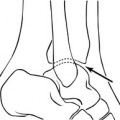Chapter 6 Reproductive system
Methods of imaging the female reproductive system
Akin O., Mironov S., Pandit-Taskar N., et al. Imaging of uterine cancer. Radiol. Clin. North Am.. 2007;45(1):167-182.
Barakat R.R., Hricak H. What do we expect from imaging. Radiol. Clin. North Am.. 2002;40(3):521-526. vii
Fütterer J.J., Heijmink S.W., Spermon J.R. Imaging the male reproductive tract: current trends and future directions. Radiol. Clin. North Am.. 2008;46(1):133-147. vii
Hysterosalpingography
Indications
2. Recurrent miscarriages: investigation of suspected incompetent cervix, suspected congenital anomaly
3. Following tubal surgery, post sterilization to confirm obstruction and prior to reversal of sterilization
Contraindications
3. A purulent discharge on inspection of the vulva or cervix, or diagnosed pelvic inflammatory disease (PID) in the preceding 6 months
Patient preparation
1. The patient should abstain from intercourse between booking the appointment and the time of the examination, unless she uses a reliable method of contraception and the appointment is made before day 21, or the examination can be booked between the 4th and 10th days in a patient with a regular 28-day cycle.
Technique
2. Using aseptic technique the operator inserts a speculum and cleans the vagina and cervix with chlorhexidine.
3. The anterior lip of the cervix is steadied (vulsellum forceps may be used but positioning the speculum can often achieve this) and the cannula is inserted into the cervical canal. If a Foley catheter is used, there is usually no need to grasp the cervix with the vulsellum forceps. The catheter should be left within the lower cervical canal if cervical incompetence is suspected.
4. Care must be taken to expel all air bubbles from the syringe and cannula, as these would otherwise cause confusion in interpretation. Contrast medium is injected slowly into the uterine cavity under intermittent fluoroscopic control.
N.B. Opiates increase pain by stimulating smooth muscle contraction.







